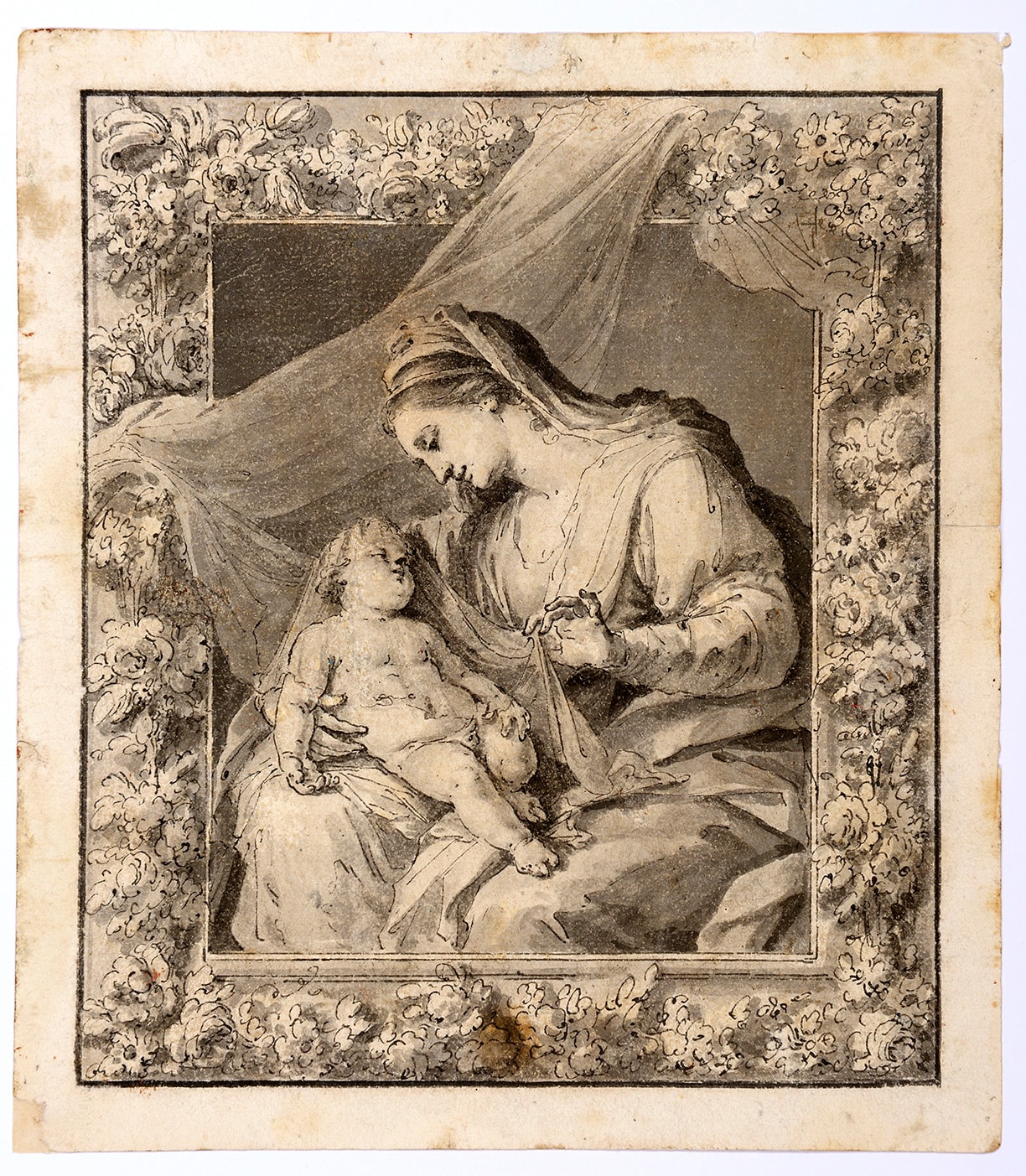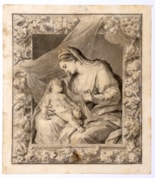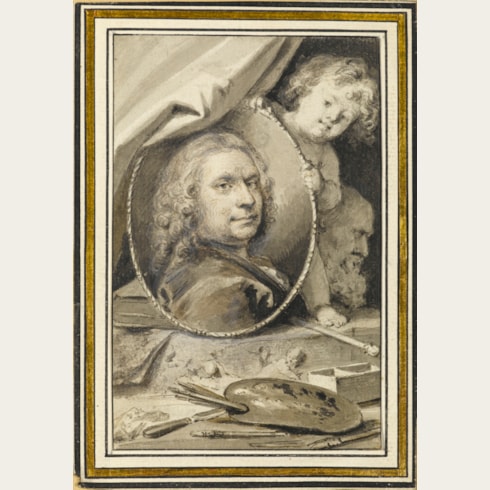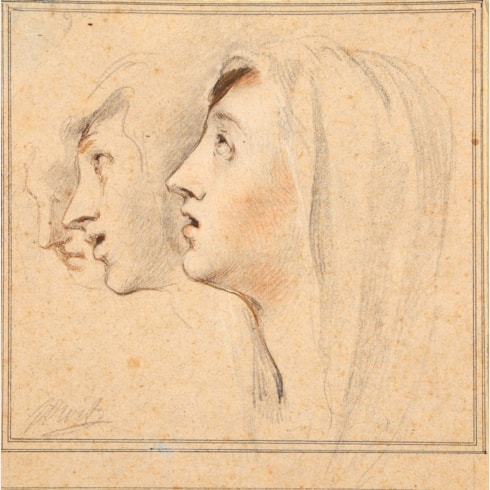Jacob de WIT
(Amsterdam 1695 - Amsterdam 1754)
The Virgin and Child, in a Decorative Floral Surround
Sold
Pen and black ink and grey wash, with framing lines in black ink.
A faint sketch of a female figure in black chalk on the verso.
Made up at the lower left corner.
Inscribed (in a modern hand) Handzeichnung / von / Sass Ferrato on the verso.
186 x 161 mm. (7 3/8 x 6 3/8 in.) [image]
209 x 185 mm. (8 1/4 x 7 1/4 in.) [sheet]
A faint sketch of a female figure in black chalk on the verso.
Made up at the lower left corner.
Inscribed (in a modern hand) Handzeichnung / von / Sass Ferrato on the verso.
186 x 161 mm. (7 3/8 x 6 3/8 in.) [image]
209 x 185 mm. (8 1/4 x 7 1/4 in.) [sheet]
With its fictive drawn border of flowers, the present sheet, though unsigned, is likely to have been intended as an autonomous work of art, rather than a preparatory study for a painting. De Wit produced a large number of such finished drawings intended for sale to collectors, which earned him a tidy income. Indeed, he was among the highest-paid artists working in Amsterdam; in 1742 alone his earnings amounted to 4,000 florins.
Jacob de Wit was a pupil of Albert van Spiers in Amsterdam before moving to Antwerp in 1708, at the age of thirteen, to live with his uncle, a wealthy merchant and art collector. He studied there with Jacob van Halle and also made copies after the work of Rubens, Van Dyck and other Flemish painters. De Wit was back in Amsterdam by 1715 or 1716, and soon became one of the leading artists in the city, with a particular reputation as a painter of decorative wall murals, ceiling paintings and overdoors for the town and country houses of wealthy merchants and patricians in Amsterdam. A Catholic, he was one of the few talented artists in Amsterdam in the 18th century to produce a significant body of paintings of religious subjects, in which the influence of Rubens was paramount. De Wit was given several commissions for altarpieces and large religious works, notably a very large painting of Moses Selecting the Seventy Elders for the Town Hall in Amsterdam, painted between 1735 and 1737. He was also particularly regarded for his grisaille paintings, in imitation of marble or stucco reliefs, which came to be popularly known as ‘witjes’ after the artist. Despite his success, he did not have a large studio with many assistants.
Jacob de Wit worked almost entirely in Amsterdam and never travelled abroad. As such he is perhaps better known, at least outside Holland, as a draughtsman than as a painter. At the time of his death, the contents of his studio contained between 2,500 and 3,000 drawings, which were dispersed at auction in Amsterdam in March 1755. (As his biographer Adolph Staring noted, ‘The immense quantity of studies and sketches from the sale of his atelier and of finished drawings made for collectors spread more readily over the western world than his paintings...and consequently De Wit is much better known as a draughtsman than as a painter. The printrooms of Amsterdam, Berlin, Brussels, Frankfort, Leyden, Haarlem, Paris and Vienna have assembled instructive series of different types of his drawings.’






